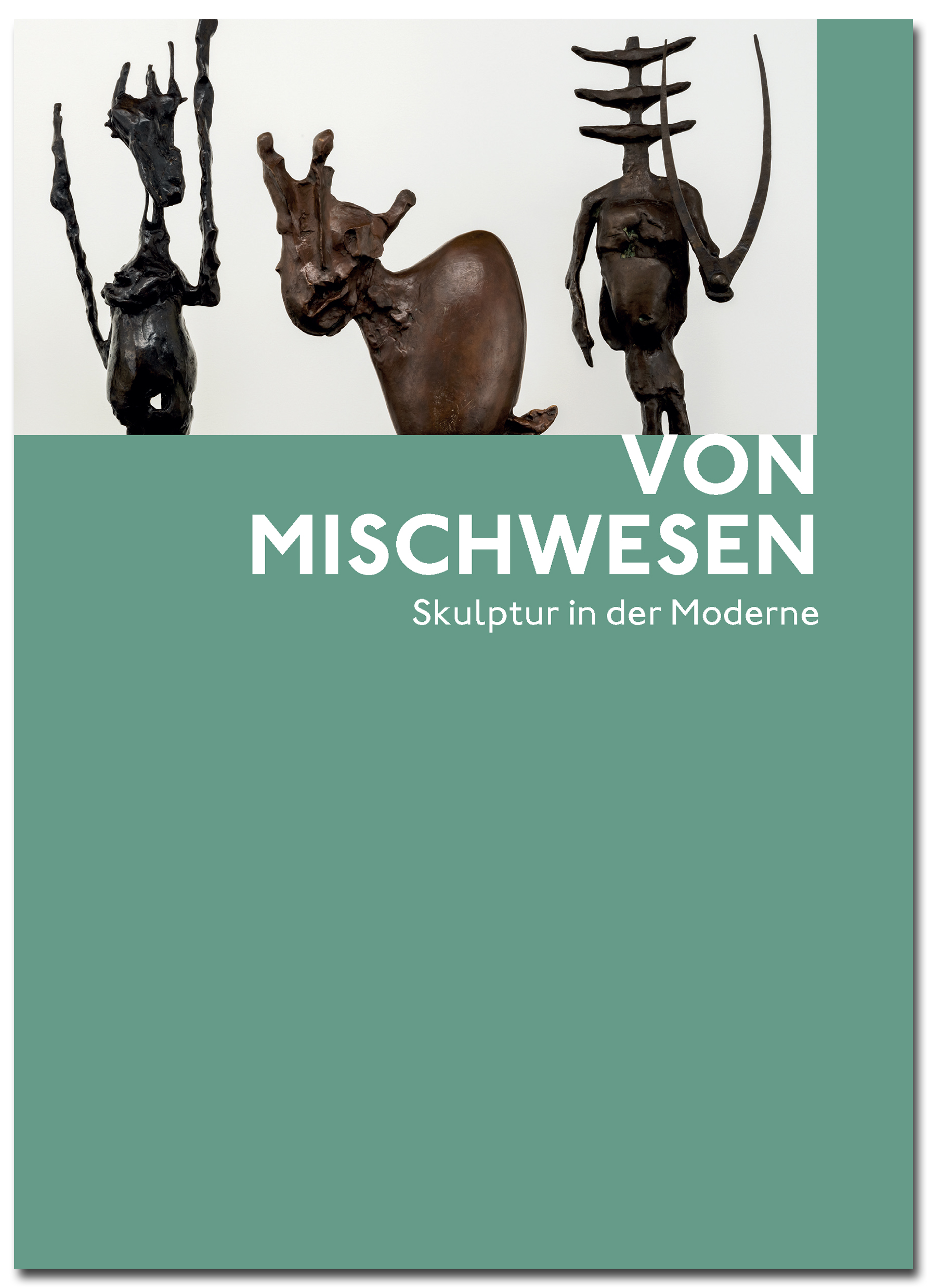
Data:
| Article number | 16910 |
| Price | 12,90 € |
Description:
OF MIXED BEINGS - SCULPTURE IN THE MODERN AGE | 25 April 2021 - 31 July 2022 | Exhibition catalogue | 76 pages | Softcover | German edition
For the first time in over 20 years, the Hamburger Kunsthalle is showing a thematic sculpture exhibition: Von Mischwesen. Sculpture in Modernism brings together around 25 works by internationally renowned sculptors, including Julio González, Karl Hartung, Marino Marini and Henry Moore, and also features a work by the lesser-known Hamburg artist Ursula Querner. The central work is the main work by the French artist Germaine Richier, consisting of five sculptures: The Large Chess Set (1959/61), with its hybrid character, opens up a dialogue with other sculptures that show parallels to it in form or content and are also hybrids or hybrids. The works in the Hamburger Kunsthalle's collection were created in the 1940s and 1950s and some of them have not been exhibited for decades.
Like Richier, many artists in the mid-20th century were concerned with processes of change, transformation and the primordial nature. Although nature by its very nature meant change, it was understood not only as an inspiring source but also as a reliable constant in a time of historical and political upheaval. A second essential component in the emergence of the sculptural "mixed creatures" of the time is the experience of war. Although the surrender of the German Reich and the dropping of the atomic bombs on Hiroshima and Nagasaki in 1945 marked the definitive end of the Second World War, the beginning of the Cold War also caused a latent nuclear threat.
The diverse exhibition includes palm-sized objects as well as larger-than-life figures, and the materials used are also varied: they range from bronze to steel, brass and wood to marble. Powerful and idiosyncratic in expression, the "mixed creatures" stimulate a range of impressions, thoughts and sensations. They can lead into threatening worlds of absurdity and surreality, but also offer comfort in nature as an eternal growing and growing together.
Sponsored by: Freunde der Kunsthalle e. V., Hans-Otto and Engelke Schümann Foundation
For the first time in over 20 years, the Hamburger Kunsthalle is showing a thematic sculpture exhibition: Von Mischwesen. Sculpture in Modernism brings together around 25 works by internationally renowned sculptors, including Julio González, Karl Hartung, Marino Marini and Henry Moore, and also features a work by the lesser-known Hamburg artist Ursula Querner. The central work is the main work by the French artist Germaine Richier, consisting of five sculptures: The Large Chess Set (1959/61), with its hybrid character, opens up a dialogue with other sculptures that show parallels to it in form or content and are also hybrids or hybrids. The works in the Hamburger Kunsthalle's collection were created in the 1940s and 1950s and some of them have not been exhibited for decades.
Like Richier, many artists in the mid-20th century were concerned with processes of change, transformation and the primordial nature. Although nature by its very nature meant change, it was understood not only as an inspiring source but also as a reliable constant in a time of historical and political upheaval. A second essential component in the emergence of the sculptural "mixed creatures" of the time is the experience of war. Although the surrender of the German Reich and the dropping of the atomic bombs on Hiroshima and Nagasaki in 1945 marked the definitive end of the Second World War, the beginning of the Cold War also caused a latent nuclear threat.
The diverse exhibition includes palm-sized objects as well as larger-than-life figures, and the materials used are also varied: they range from bronze to steel, brass and wood to marble. Powerful and idiosyncratic in expression, the "mixed creatures" stimulate a range of impressions, thoughts and sensations. They can lead into threatening worlds of absurdity and surreality, but also offer comfort in nature as an eternal growing and growing together.
Sponsored by: Freunde der Kunsthalle e. V., Hans-Otto and Engelke Schümann Foundation

